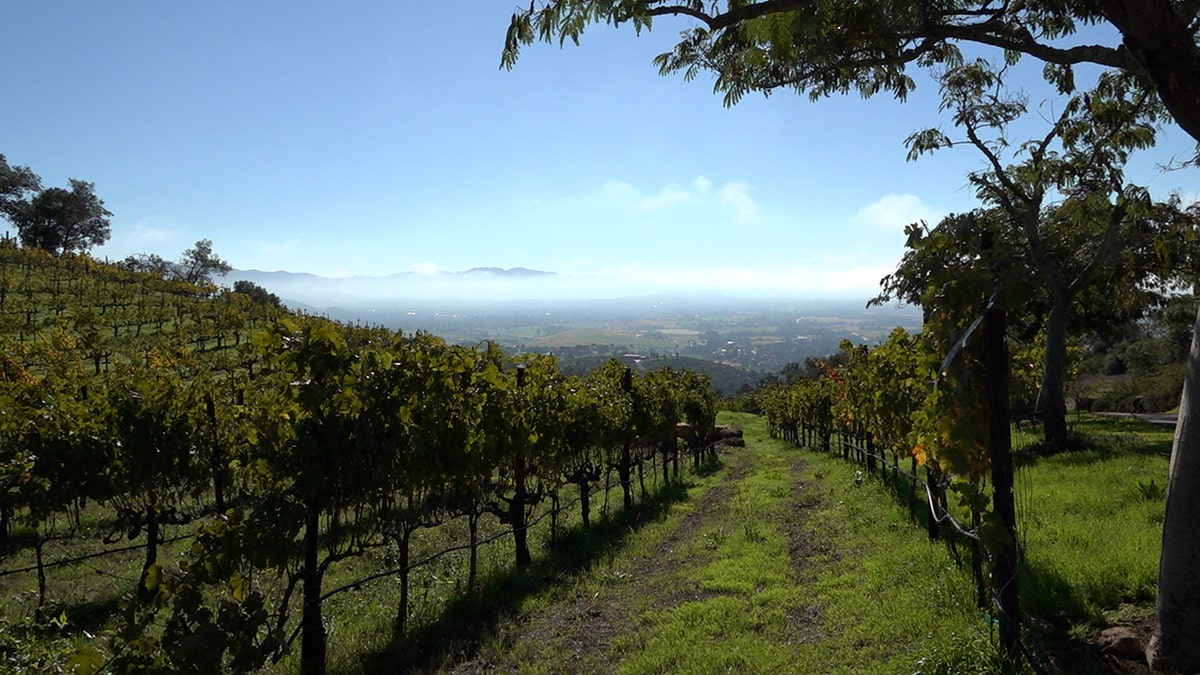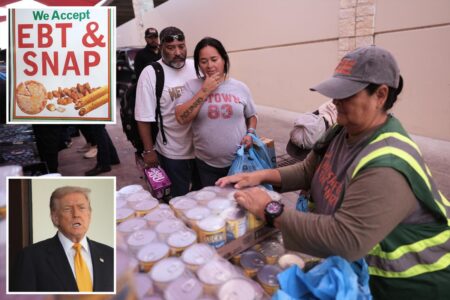NEWYou can now listen to Fox News articles!
NAPA, Calif. – Tariffs on imported products are creating widespread challenges for the U.S. wine industry, affecting both imports and domestic production, according to industry representatives.
“Tariffs are a multilayered issue,” said Dawson Hobbs, executive vice president of government affairs at the Wine and Spirits Wholesalers of America. “The most direct one people think of is the tariffs placed on imported wine. But there are hidden aspects too, tariffs on glass, aluminum cans, labels, even glue that holds boxes together. These universal tariffs affect the entire production process and supply chain.”
Wholesalers, who buy products from producers or importers and sell them to retailers, also face increased costs. Holding inventory becomes more expensive as carrying costs rise, and those costs either need to be recouped when selling to retailers or absorbed.
“When our cost goes up, our carrying cost, the cost of the product sitting in our warehouse, goes up as well,” Hobbs said. “It really creates a challenge for the whole industry and supply chain.”
TRUMP SAYS TARIFFS CRITICAL TO NATIONAL SECURITY AS SUPREME COURT PREPARES LANDMARK DECISION
The on-again, off-again nature of tariff announcements adds another layer of difficulty. The Trump administration first threatened 200% tariffs against European wine imports in the spring, before settling on 15%.
“At the beginning of the year, there were tariffs threatened, then delayed, then implemented. When products take 60 to 70 days to arrive, it’s very difficult to plan when you don’t know what the tariff rate will be,” Hobbs told Fox.
Hobbs warned that rising costs could soon affect consumers more directly.
“Many companies have tried to absorb the cost, but as we near the end of this year and into the beginning of next year, consumers will start to see the impact on shelf prices,” he said.
SUPREME COURT WEIGHS TRUMP TARIFF POWERS IN BLOCKBUSTER CASE
Tariffs can affect American producers indirectly, when many components involved in wine production come from overseas.
“American wines are certainly feeling tariffs in terms of inputs, aluminum cans, glass, cardboard, glue,” Hobbs said. “But overall, it creates more headwinds for the industry and does not help anyone with the final experience for the consumer.”
Lucia Hossfeld, co-owner of Hossfeld Vineyards with her husband, said they are feeling the effects of tariffs on the winemaking side of the business.

“French oak barrels, the glass bottles, the cork. We’ve also seen consolidation, the labeling of the wine, as well as the selling of the wine. We’ve seen kind of retaliatory tariffs,” Hossfeld said.
It is often difficult to source some of the needed materials in the United States, she explained. Other times, certain imported materials are necessary for the type of wine they make.
VINEYARD OWNERS USE GOSPEL OF JOHN METAPHOR TO GUIDE WINEMAKING PHILOSOPHY
Over the last 18 months, costs have risen around 20%, largely due to inflation and labor costs, but tariffs implemented earlier this year have also added to higher operational expenses. Hossfeld said they’re working with trade partners to absorb costs and keep prices stable.

“On the supplier end, our barrel company, they’re making concessions, you know, splitting the cost with us,” Hossfeld said.
Similarly to domestic winemakers, Hobbs said many wholesalers are also absorbing the cost of tariffs, but he warned it’s not a sustainable solution.
“Our industry has very thin margins for the most part. Most people that you talk to do believe you will start seeing real price increases, unfortunately, as we near Christmas, and as we get into the first of the year,” Hobbs said.
Read the full article here














